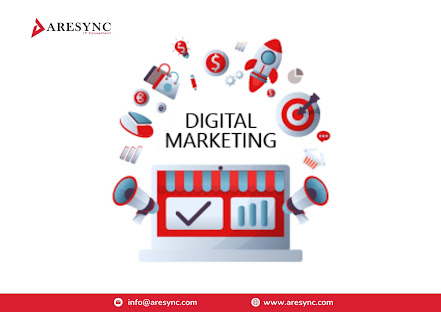How Should You Create a Digital Marketing Plan?
With so many
elements and strategies at play, successful Digital marketing must be supported
by a plan.
According to
Philip Kotler, considered one of the founders of modern marketing, the function
of a traditional marketing plan is to document how the organization's strategic
goals will be achieved through specific Marketing Strategies and tactics,
starting with the customer. The plan is also linked to the plans of other
departments in the organization.
Here is a
step-by-step framework for creating a digital marketing plan
1- Take Stock of the Current Situation
When
creating a Digital Marketing plan, the first thing to do is to analyze the
internal and external situation. SWOT analysis is a useful framework for
analyzing the strengths, weaknesses, opportunities, and threats of your company
and the market as a whole.
You need to
know what ecosystem your company operates in, your customers' needs, and where
they are being met. This analysis can be qualitative and quantitative,
considering digital habits, intermediaries, and influencers.
2 - Customized Planning
Knowing who
you want to reach and their interests, needs, and preferences is essential to
meeting their expectations, which is a key part of the marketing plan. This is
when the refining phase of your plan begins.
This is
where you carefully analyze your prospects and find out what content they
consume and how they consume it, their target criteria, who and what groups
they follow, etc.
The more
information you can extract from your profile, the closer you are to creating
relevant content and implementing a strategy that will work.
This
information will help marketers develop more strategic content that will likely
engage their audience.
3 - Set Goals
Once you
know your market position and strengths, set goals to clarify your direction.
To achieve these goals, you need to plan.
In doing so,
it's best to avoid vague goals.
For example,
doubling your organic search traffic in the next 12 months would be a simple
goal.
This is the
basis for setting deadlines, goals, milestones, and specific actions such as
optimizing the site, creating content for new keywords, or implementing
strategic promotions.
4 - Create a Calendar
Creating a
calendar of marketing activities is the best way to track all the steps. This
means that, at this point, you are creating a timeline to achieve your goals.
The
activities to be completed, who is responsible for each activity, and the
deadlines for all milestones should be clear.
5 - Don't Forget to Optimize Your Strategy
Once you've
developed and implemented your digital marketing strategy, the work doesn't
stop there. The most important planning phase comes next: analyzing the
results. This is an important foundation for effectively optimizing the results
and costs of your digital marketing.
In addition,
by measuring each action with specific indicators, you can know if you have
achieved the desired results, the effectiveness of the strategies and campaigns
you implemented, improve what didn't work, and consider that your goals have
been reached.
Remember
these steps as you develop your digital marketing plan to ensure you remember
everything.
Steps to follow
Digital
marketing allows you to track your campaign until it generates revenue. You can
see if your campaign was successful or if you need to improve it.
The biggest
difference in Digital Marketing is the ability to measure results, so we've
broken down the key metrics to monitor.
By
monitoring results, you can reduce operational costs and focus your investments
on the activities that produce the most results.
Let's look
at key metrics critical to your digital marketing efforts and how to find them.
1) ROI
ROI stands
for Return on Investment.
It is a
metric used to measure the return on investment for a business. In other words,
it allows you to see if a company gains or losses on its investment.
2) CAC.
We have seen
that the ROI calculates the return on investment. Today, CAC represents the cost
of acquiring a customer.
This
indicator helps managers understand how much they are investing in customer
acquisition. It considers marketing and campaign costs, team salaries, and
other amounts allocated to customer acquisition and acquisition activities.
Watch the
video below to understand why CAC is an important indicator for business
development and how it is calculated:
3) LTV
Lifetime
value (LTV) is an indicator that reflects the lifetime value of a
customer. This value is important for companies that sell services or products
on a subscription basis and create recurring value over several months.
By properly
calculating LTV, sales teams can know how long a customer should stay with the
company and ensure that marketing investments are well-spent.
4) CPL
CPL is short
for "cost per lead." It is a metric used in paid media campaigns to
determine how much a company spends on lead acquisition.
It is an
indicator that should always be optimized to reduce its value.
5) Employee Turnover
It is very
important to control and reduce employee turnover in your company. In this
case, employee turnover indicates the number of customers who leave the
company's services or products in a given period.
To calculate
this indicator, add the number of customers who leave your product or service
during a given period.

.jpg)


.jpg)
Comments
Post a Comment